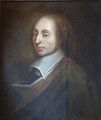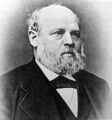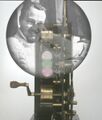Template:Selected anniversaries/January 23: Difference between revisions
No edit summary |
No edit summary |
||
| Line 33: | Line 33: | ||
File:David Hilbert.jpg|link=David Hilbert (nonfiction)|1862: Mathematician [[David Hilbert (nonfiction)|David Hilbert]] born. he will discover and develop a broad range of fundamental ideas in many areas, including invariant theory and the axiomatization of geometry. | File:David Hilbert.jpg|link=David Hilbert (nonfiction)|1862: Mathematician [[David Hilbert (nonfiction)|David Hilbert]] born. he will discover and develop a broad range of fundamental ideas in many areas, including invariant theory and the axiomatization of geometry. | ||
File:Heinrich Geissler.jpg|link=Heinrich Geißler (nonfiction)|1862: Glassblower, physicist, and [[Gnomon algorithm]] theorist [[Heinrich Geißler (nonfiction)|Johann Geißler]] demonstrates an advanced version of the [[Geissler tube (nonfiction)|Geissler tube]] which acts as a simple [[scrying engine]], using low pressure gas-discharge luminescence as a remote-input-output modulator. | |||
||1862: Frank Shuman born ... inventor, engineer and solar energy pioneer known for his work on solar engines, especially those that used solar energy to heat water that would produce steam. | ||1862: Frank Shuman born ... inventor, engineer and solar energy pioneer known for his work on solar engines, especially those that used solar energy to heat water that would produce steam. | ||
Revision as of 14:13, 1 September 2018
1656: Blaise Pascal publishes the first of his Lettres provinciales.
1805: Inventor Claude Chappe dies. He invented and developed a practical semaphore system that eventually spanned all of France -- the first practical telecommunications system of the industrial age.
1854: Mathematician Leopold Kronecker discovers new family of Gnomon algorithm functions.
1862: Mathematician David Hilbert born. he will discover and develop a broad range of fundamental ideas in many areas, including invariant theory and the axiomatization of geometry.
1862: Glassblower, physicist, and Gnomon algorithm theorist Johann Geißler demonstrates an advanced version of the Geissler tube which acts as a simple scrying engine, using low pressure gas-discharge luminescence as a remote-input-output modulator.
1898: Electrical engineer and inventor Oliver Blackburn Shallenberger dies. He invented the first successful alternating current electrical meter, which was critical to the general acceptance of AC power.
1941: Charles Lindbergh testifies before the U.S. Congress and recommends that the United States negotiate a neutrality pact with Adolf Hitler.
1967: John Brunner uses scrying engine to detect and expose crimes against mathematical constants.
1974: Mathematician, academic, and crime-fighter Werner Fenchel publishes new class of Gnomon algorithm functions which use nonlinear programming techniques to detect and prevent crimes against mathematical constants.
2003: A very weak signal from Pioneer 10 is detected for the last time; no usable data can be extracted.
2007: CIA officer and author E. Howard Hunt dies. Along with G. Gordon Liddy, Hunt plotted the Watergate burglaries and other undercover operations for the Nixon administration.











